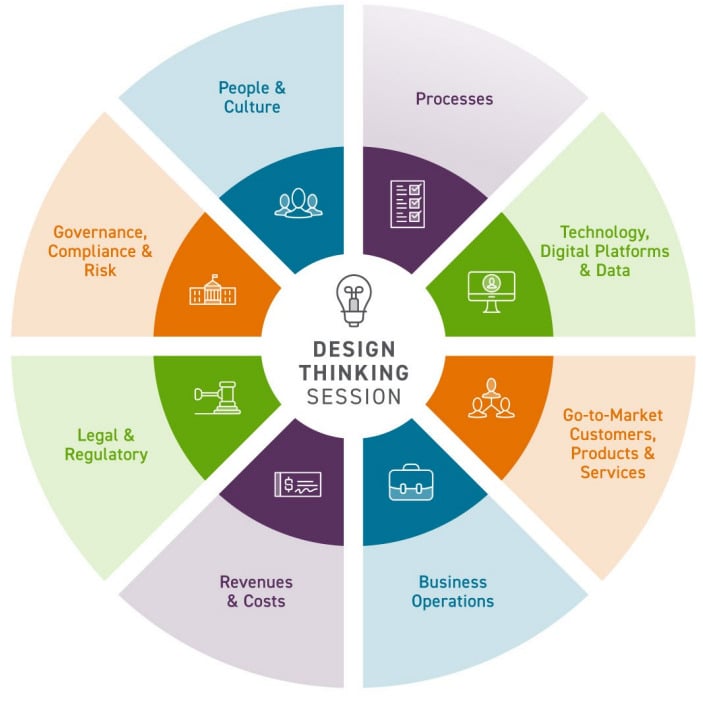Building a Better Roadmap
On November 15, 2021, President Biden signed the Infrastructure Investment and Jobs Act (“IIJA” or the “Infrastructure Bill”) into law, the largest federal investment infrastructure bill in United States history. The $1.2 trillion package includes a five-year allocation of $550 billion in federal investments in America’s infrastructure to upgrade highways and major roads, bridges, airports, ports, and water systems. Additional investments cover expansions and improvements to the nation’s broadband access, public transportation systems, and energy grid infrastructure. Almost 80% of the $550 billion in new spending will go to projects funded entirely or primarily by grants.
Infrastructure Bill 2021 Breakdown
Program feasibility guidelines will extend funding accessibility for all states, regions, and localities. The Infrastructure Bill is classified into 12 programs to summarize the core objectives while highlighting the primary funding agencies and provide a representative sample of affected programs within each program’s category. The following illustration presents the program provisions corresponding to affected industries in
the IIJA.
Programs in the Infrastructure Investment & Jobs Act (IIJA) (1)
Roads, Bridges & Major Projects – $110 Billion
- Reauthorize surface transportation programs
- Invest in additional funding to repair roads and bridges and support major transformational projects
Public Transportation – $39 Billion
- Repair public transit infrastructure (i.e., buses, railcars, stations and track, signals, and power systems)
- Replace deficient transit vehicles, including buses with clean, zero emission vehicles
- Invest in modernizing transit to reduce greenhouse emissions
Passenger & Freight Rail – $66 Billion
- Eliminate Amtrak maintenance backlog
- Modernize the Northeast Corridor
- Bring reliable rail service to areas outside the northeast and mid-Atlantic
Airports – $25 Billion
- Repair airports and reduce maintenance backlogs
- Reduce congestion and emissions near airports and drive electrification and other low carbon technologies
Ports & Waterways – $16 Billion
- Upgrade port infrastructure and waterways
- Reduce congestion and emissions near ports and waterways and drive electrification and other low carbon technologies
Water – $62 Billion
- Expand access to clean drinking water
- Invest in water quality infrastructure and eliminate lead service pipes
- Address evolving contaminants in drinking water
Clean Energy & Power – $73 Billion
- Delivery of clean energy transmission and grid
- Build miles of new resilient transmission lines while expanding renewables and clean energy
- Fund new programs to deploy clean energy technologies to zero-emissions
Electric Vehicles, Buses & Ferries – $15 Billion
- Build and expand a national network of EV chargers
- Provide funding for deploying chargers along highway corridors
- Reduce emissions and improve air quality
Broadband – $65 Billion
- Ensure that every American has reliable access to high-speed internet
- Invest in broadband infrastructure deployment
- Lower prices for internet services
Resiliency – $47 Billion
- Make infrastructure resilient against climate change, cyberattacks, and hazardous weather conditions
Environmental Remediation – $21 Billion
- Clean up Superfund and brownfield sites
- Reclaim abandoned mine lands
- Cap orphaned oil and gas wells
Safety – $11 Billion
- Invest in the safety of transit system, including highways, pedestrians and vehicles and trucks
- Enhance crash avoidance and drunk driving prevention technologies
Alignment Between Federal Agencies and the Programs
The Federal government is preparing to disburse more than $1.2 trillion in program funds. States will apply for funding through a competitive process requiring proposals and plans for the projects’ scope, anticipated improvements and benefits. Elected and appointed leaders of the successful recipients will need to determine the processes and procedures their organizations will implement to properly administer the grants they receive. Given the requirements that are expected from the Federal government, as well as the likelihood of regulatory changes like those seen under the Coronavirus Aid, Relief, and Economic Security Act (“CARES”) and American Rescue Plan Act (“ARPA”), implementing a program that is agile and ensures proper compliance and transparency will be critical.
To give an example of the complexity of funding, we can examine the Broadband program. For instance, high speed internet funded from the Broadband program, also has multiple other funding sources and oversight agencies. Some of the agencies involved the National Telecommunications and Information Administration and the U.S. Department of Commerce. Each state will need to submit detailed plans to obtain the Infrastructure Bill funds that are available to them using a formula. They can also compete for other pools of money. Cities and counties will also benefit from providing “their” plan to the state, so that it is included in the state’s request, in addition to competing for funding of their own. About one third of the Infrastructure Bill funding is competitive and will go to the projects with the most “merit,” regardless of state.
Program funding will be disbursed throughout a five- to ten- year period. There will likely be a complex disbursement due to the difference in each program’s objectives, structure, deployment parameters, and administration. Additionally, several state legislatures have narrowed the scope of fund usage by specifying which parties can distribute funds (e.g., government bodies, counties, or cities) or receive funds (e.g., carriers or not-for-profits), and in what manner.
Impact of the Infrastructure Bill on Various Industries
There will be a substantial impact on various industries including industrial manufacturing, construction, professional services, education, technology, media and telecom, government, government contractors, real estate, and more. This will enable thousands of companies in many different industries the opportunity to benefit by providing goods and services on these projects, but for those new to working on federally funded projects, additional compliance requirements will require attention.
Industrial Manufacturing
The Infrastructure Bill programs that will impact this sector are Water, Roads, Bridges & Major Projects, Public Transportation, Airports, Ports & Waterways, Passenger & Freight Rail, Electric Vehicles, Buses & Ferries, Broadband and Resiliency. The Infrastructure Bill will ease some of the supply chain challenges especially with funding to repair and rethink the ports and waterways. It may also bring a resurgence to more reshoring to further shorten existing supply chains.
- Industrial manufacturers must continue to prioritize evolving health and safety measures required to protect employees and customers while balancing impacts to productivity, service levels, and operating costs.
- The technology evolution will impact all businesses. Every business will need to identify its role in the supply chain ecosystem, maintain a total focus on the customer experience, and partner intelligently across the value chain to access greater opportunities for growth. In addition, it will help push greater advancement of Industry 4.0 than ever before — bringing better connectivity and automation. Those manufacturers who embrace digital transformation will be farther ahead to take advantage of infrastructure dollars.
- Utility companies will need to determine how best to upgrade their systems to build miles of new resilient transmission lines.
- Public transit investment will improve the effectiveness of the U.S. supply chain and increase talent mobility, which is vital to the future success of the manufacturing sector.
- Companies focusing on renewable energy will see a significant increase in demand.
Construction
The construction sector provides the labor for nearly every program in the Infrastructure Bill. The talent shortage facing the industry will put immense pressure on companies in this space. Nevertheless, the cost of talent is likely to substantially increase.
- IIJA infrastructure investment will provide more demand for commercial construction over residential jobs.
- The robust capital infusion over the next five to ten years will provide opportunities for more sustained growth for contractors in the construction space.
- Construction companies should analyze the markets and identify investment opportunities within specific low-income communities to take advantage of the IIJA programs.
Professional Services
The professional services industry includes several diverse sub-sectors and will see a substantial increase in demand for their services as a result of the IIJA programs.
- Architecture, engineering, and contractor firms will provide the plans and work with State and local agencies, cities and municipalities, and construction companies to execute on upgrades to airports, ports, and public transport, in addition to repairs of roads and bridges.
- Consultancies will see an increase in business activity, as clients in these sectors look to digitally transform themselves to do “more with less”, manage risk, and focus on becoming more energy efficient.
- Finance services companies, including private equity/venture capital, banks, and lenders, will see an increase in demand for funding by businesses seeking to grow, improve the efficiency and effectiveness of their operations, upgrade their technologies, and hire talent.
- Private equity/venture capital firms will tap into opportunities to use dry powder to invest in start-ups and growth companies across all the sectors impacted by the Infrastructure Bill.
- Other services that will see an increase in demand include (but not limited to) Legal, Risk, and Regulatory services.
Technology, Media & Telecom
Technology businesses will be impacted, as businesses looking to take advantage of the infrastructure dollars plan to upgrade their software and systems, move their data and technologies to the cloud, and leverage automated technologies such as Artificial Intelligence (“AI”), Machine Learning (“ML”), Robotics Process Automation (“RPA”), Artificial Reality/Virtual Reality (“AR/VR”), Biometrics, etc. to improve their productivity.
- Construction technology companies will benefit from DOT’s investment in advanced digital construction management systems.
- Cable and internet providers will see tremendous growth opportunities by expanding networks to rural areas and innovating new smart infrastructure and connectivity capabilities.
- Cybersecurity companies will play a critical role in keeping critical energy infrastructure enhancements and connectivity upgrades safe and secure.
- Electric vehicle (“EV”) software and hardware providers will benefit from planned investments in EV charging stations and shift to energy efficiency and sustainability.
- Technology companies in the renewable energy sector in the areas of nuclear, climate resilience platforms, clean energy and environmental remediation will see large growth opportunities from the Infrastructure Bill.
Education
The war for talent will continue to intensify with the spike in demand for qualified resources to execute on new projects. Every Infrastructure program will impact this sector.
- Some workforce development experts estimate that two million new jobs per year will be created over the next decade.
- Vocational training institutions will fill a critical role in helping the country meet the demand for a highly trained workforce.
- Colleges and universities were already feeling the impacts of the pandemic, with declining enrollment and rising costs of education. To meet changing student financial and professional needs, profitably grow revenues, and optimize performance, colleges will need to determine how best to transform their operations, and leverage technology and data as a core to their competitive advantage.
Government
Government agencies that will be responsible for disbursing program funds will face significant pressure to improve business capabilities and drive transparency. The expectation will be that these organizations will have the competencies to receive, assess and approve proposals while ensuring compliance with the program rules. They will also need to track the funding provided to the recipients.
As demonstrated with the CARES Act and ARPA programs, many state and municipal governments face the challenge of not having adequate decision or approval processes, technology and systems to meet the needs that will arise as they manage the IIJA Program.
- Some government agencies have worked through the skilled personnel shortage by supplementing full-time workers with contractors or simply outsourcing the function completely. They have also focused on improving government processes by training workers and leveraging software so that they can become more efficient, productive and responsive.
- The technology gap is being mitigated through the upgrading or replacing of existing systems with modern grants management systems, or through the use of systems brought by outside contractors assisting in the management of the programs.
- Modernizing procurement tools and replacing failing systems with more sustainable systems will facilitate productive and timely expenditures for eligible projects.
It should be anticipated that these challenges and needs will grow given the expected complexity and size of the IIJA Program.
Government Contractors
Private companies that are government contractors and have the necessary contracts with federal agencies and/or state & local governments to address infrastructure repairs and upgrades will be prime beneficiaries of the Infrastructure Bill.
- Private companies unfamiliar with government contracting will need to gain an understanding of the complexities of working with the government to successfully win and perform contracts.
- Government-compliant cost accounting, budgeting, pricing, and documentation will be critical for government contractors.
- Contractors that specialize in areas of construction, engineering, repair & maintenance, transportation, environmental remediation & conservation, technology and telecommunications are well-positioned for IIJA’s funding.
- Small, disadvantaged businesses or businesses run by minority groups or women-owned businesses should seek to actively participate in direct awards or as subcontractors to large businesses.
Real Estate
The real estate sector intersects with nearly all aspects of the economy, including housing, offices, and retailers, hence, will be impacted by the IIJA.
- Real estate development and re-development opportunities will align closely with program areas getting funding from the IIJA.
- Improvements to transportation systems, broadband and utilities will drive value across many real estate asset classes and enhance the livability of impacted communities.
- The spending package will benefit developers of data centers, industrial properties, and transit-oriented real estate.
- To enhance financial strength, companies could focus on bolstering their asset portfolios and digitizing the finance function.
Optimize Strategic Planning to Capitalize on Infrastructure Bill Funding
There has been a lot of discussion about the Infrastructure Bill, the various programs, and the industries that will be impacted. However, what often gets overlooked is the impact the Bill will have on companies operating in the various sectors and the tangible strategies and action plans needed to take advantage of the increased investment.
To determine actions needed to optimize your business to take advantage of the Infrastructure Bill funding, we recommend your organization take a more holistic approach and conduct a “design-thinking” session. A design-thinking session is a facilitated session where multi-disciplinary teams work together to accelerate problem-solving and create unexpected opportunities and turn insights into tangible results. Oftentimes, leadership tends to presume technology will be the solution to their issue(s). More than ever, technology is an important enabler of change, suggesting a correlation between business transformation and technology to meet long-term success. Keep in mind that there is no “one-size-fits-all” solution.
A design-thinking approach includes:
1. Re-examine Your Market
- Conduct an “outside in” analysis
- Reexamine your business factors
- Identify shifts in customer needs, competition, regulatory environment, and new technologies
- Determine your organization’s impact by relevant program and examine how it’ll be administered
2. Re-assess Your Business
- Perform an “inside-out” assessment
- Calculate scale of taking advantage of the funding
- Reassess organization’s product/service offerings, including the technologies leveraged to support them
- Determine your go-to-market approach and how your customers and internal stakeholders are impacted
- Review business operations, and talent skills and capabilities to determine the changes that would be needed to continue to grow the business, and if possible, do more with the same/reduced resources
- Conduct a cost-benefit analysis including, estimated revenue growth, costs to achieve those gains, impact on current customers, return on investment, etc.
- Prioritize what needs to be done and create a road map to determine next steps
3. Re-engineer Your Business
- Focus on streamlining your business operations
- Assess how alternate technologies within your organization can increase productivity and efficiency
- Identify alternate approaches to manufacturing, sourcing, supply chain, etc.
- Assess if the current technology infrastructure within the organization would be able to handle the increased workload, and if not, identify actions needed to be taken to upgrade the technology infrastructure
- Determine talent needs and identify alternate talent and operating models
- Address your risk, regulatory, and legal issues
- Determine the funding relevant for your organization to come across your growth imperative
Get Started Now
The Infrastructure Bill is a once-in-a-generation investment and provides America’s infrastructure with the continuity and stability crucial to the development and investment for the immediate and future needs of our communities. To take advantage of the increased demand, you will need to develop tangible strategies and execute on them to position your business for growth. Being proactive will pave your way to success. Your journey will be unique, and we are here at every turn in the road to guide you forward.
(1) https://www.whitehouse.gov/briefing-room/statements-releases/2021/11/06/factsheet-the-bipartisan-infrastructure-deal/




